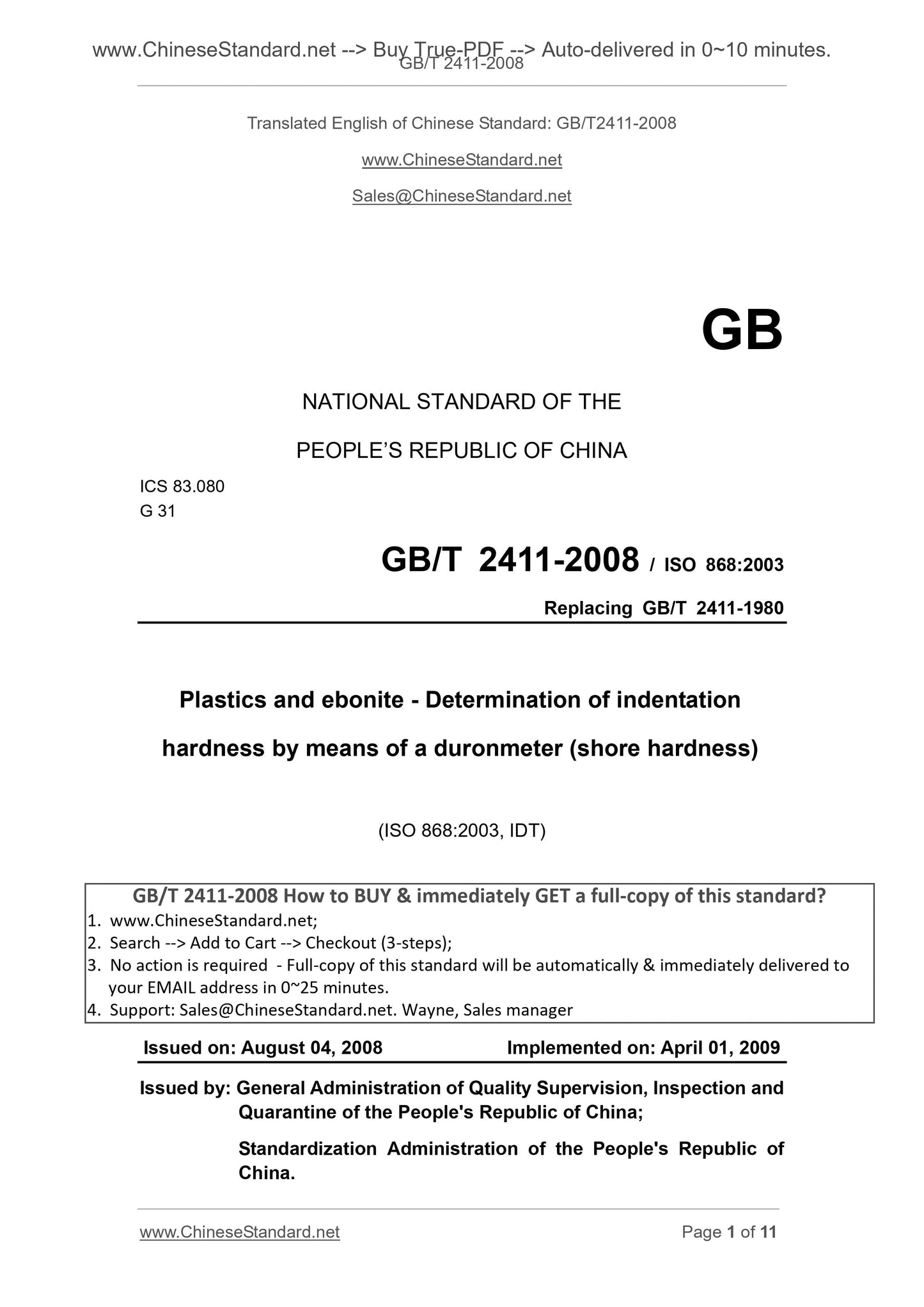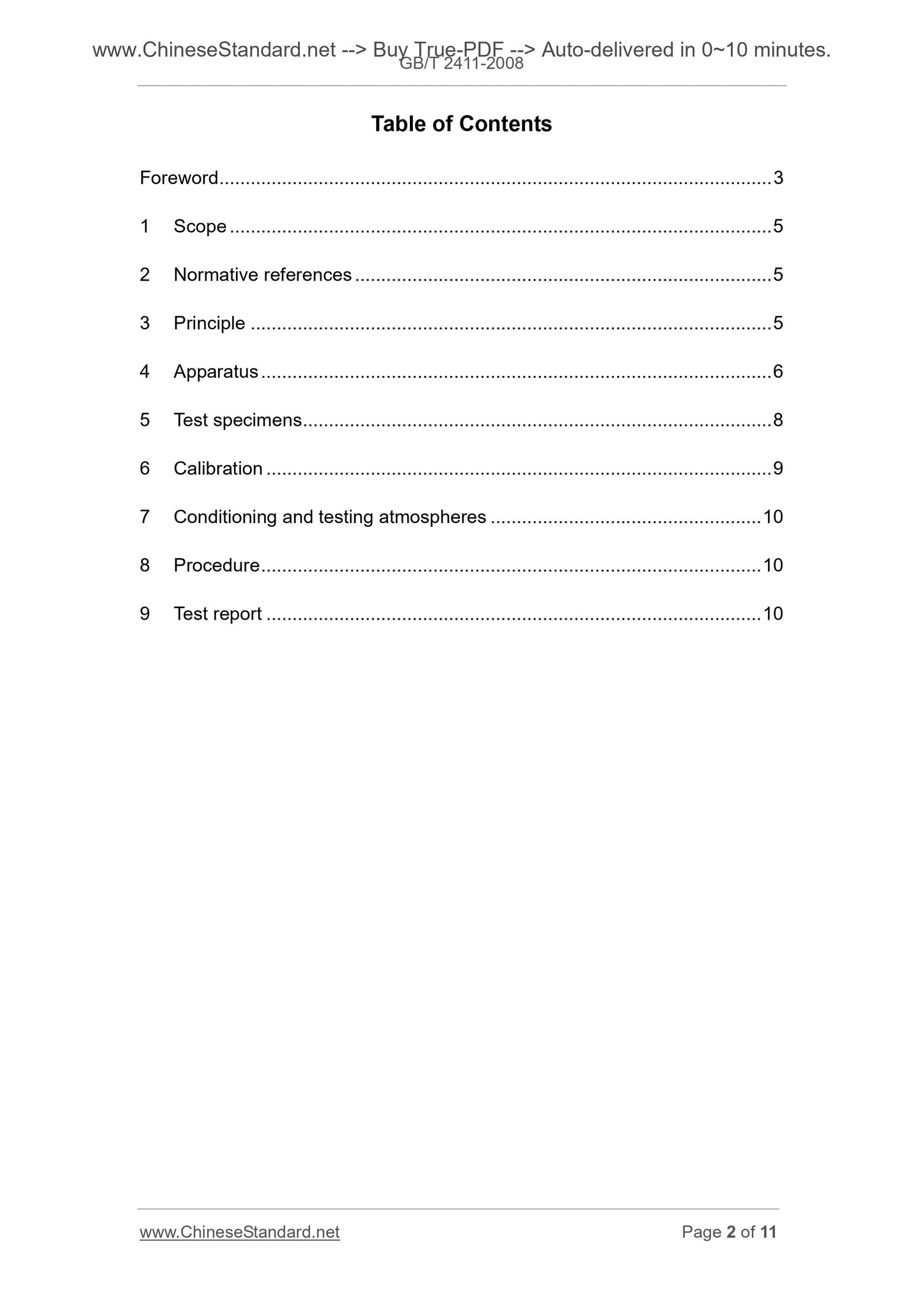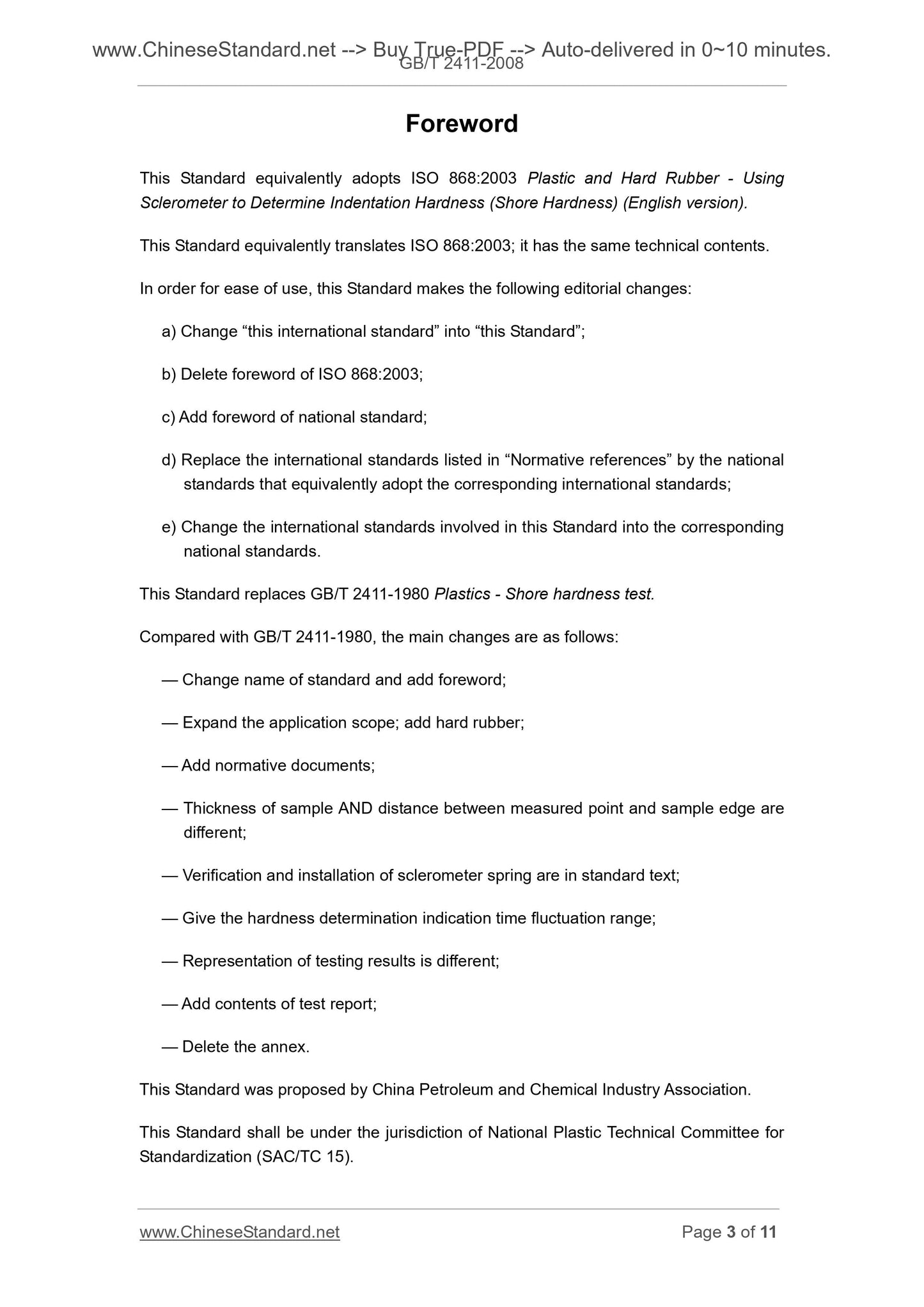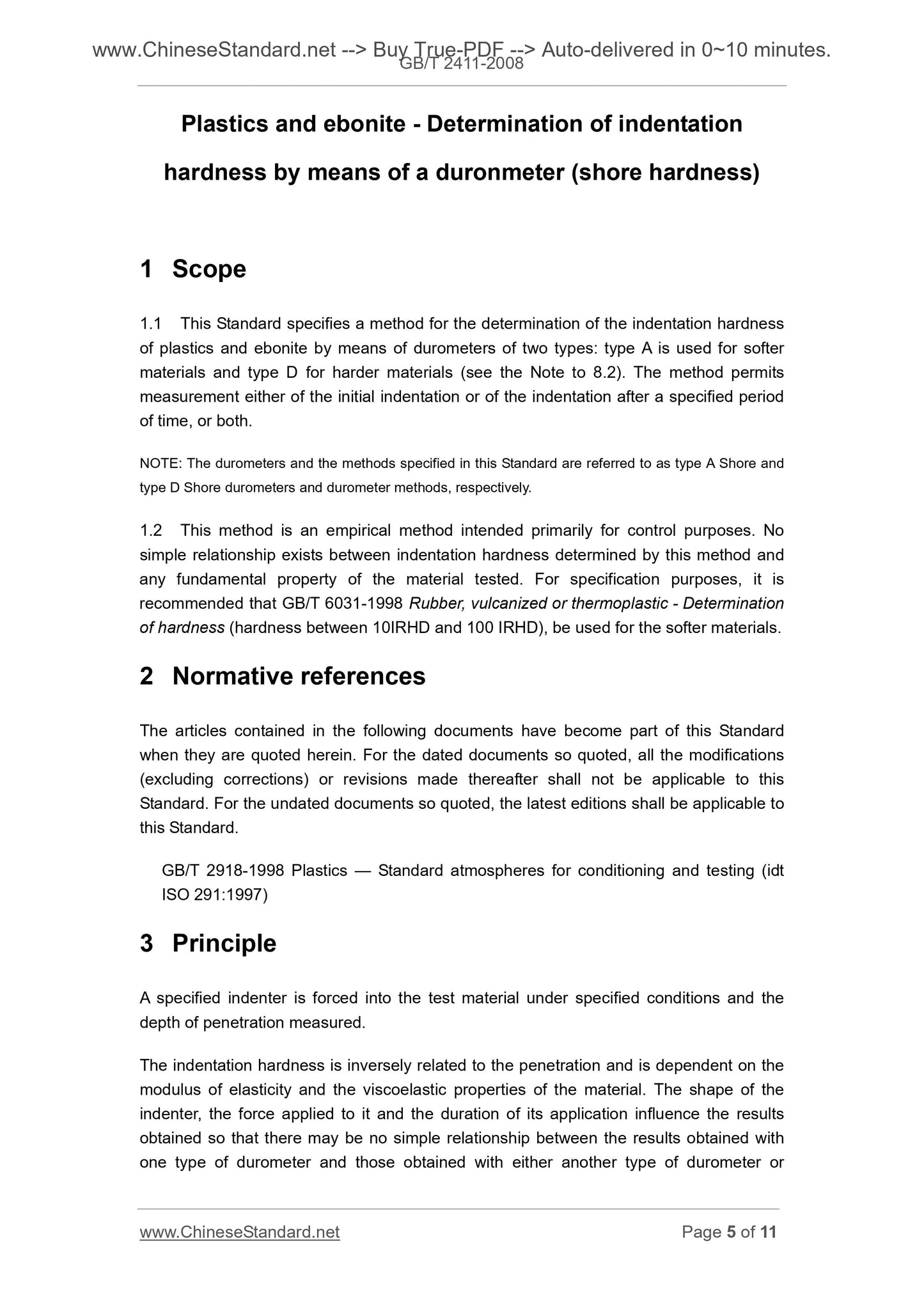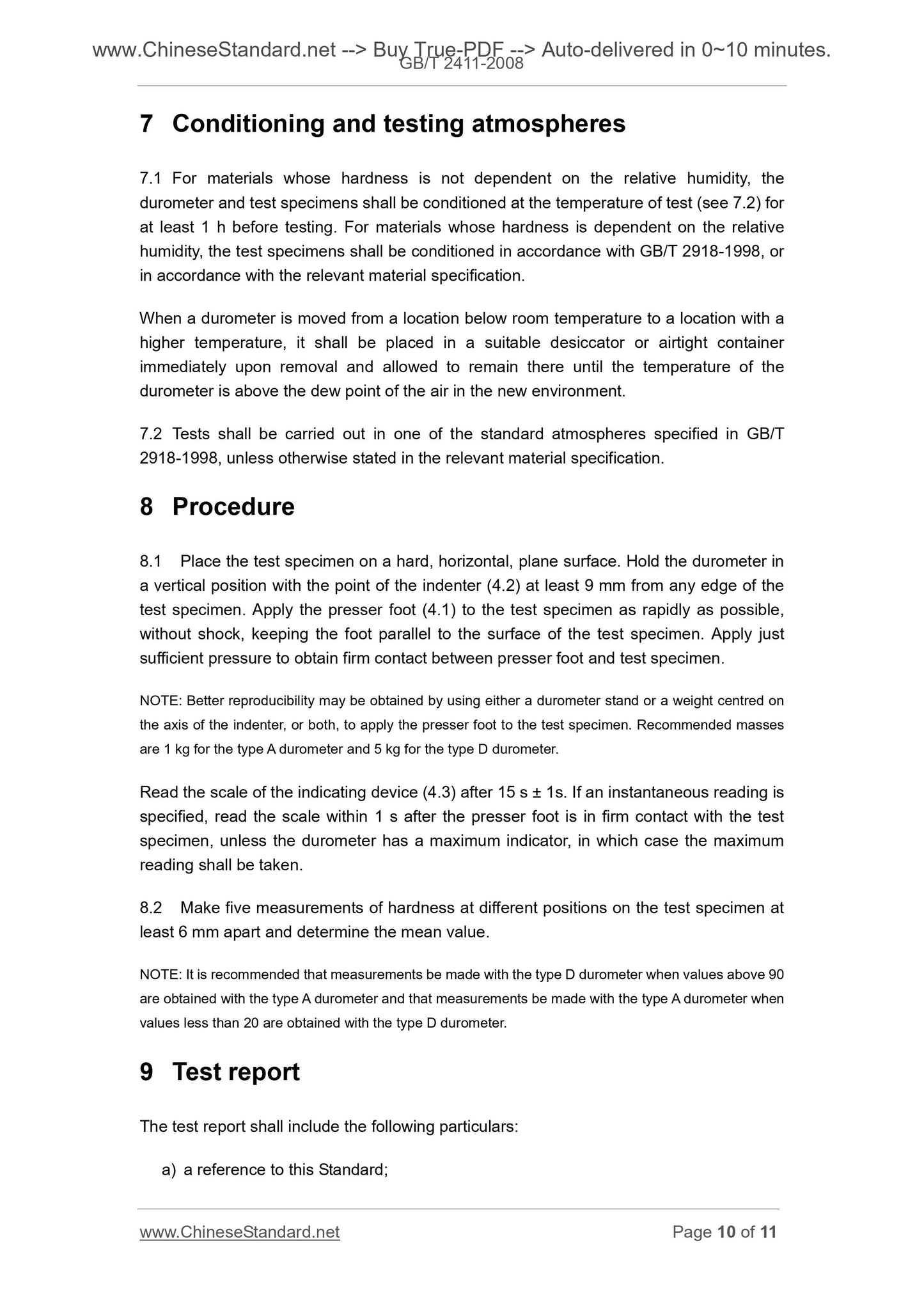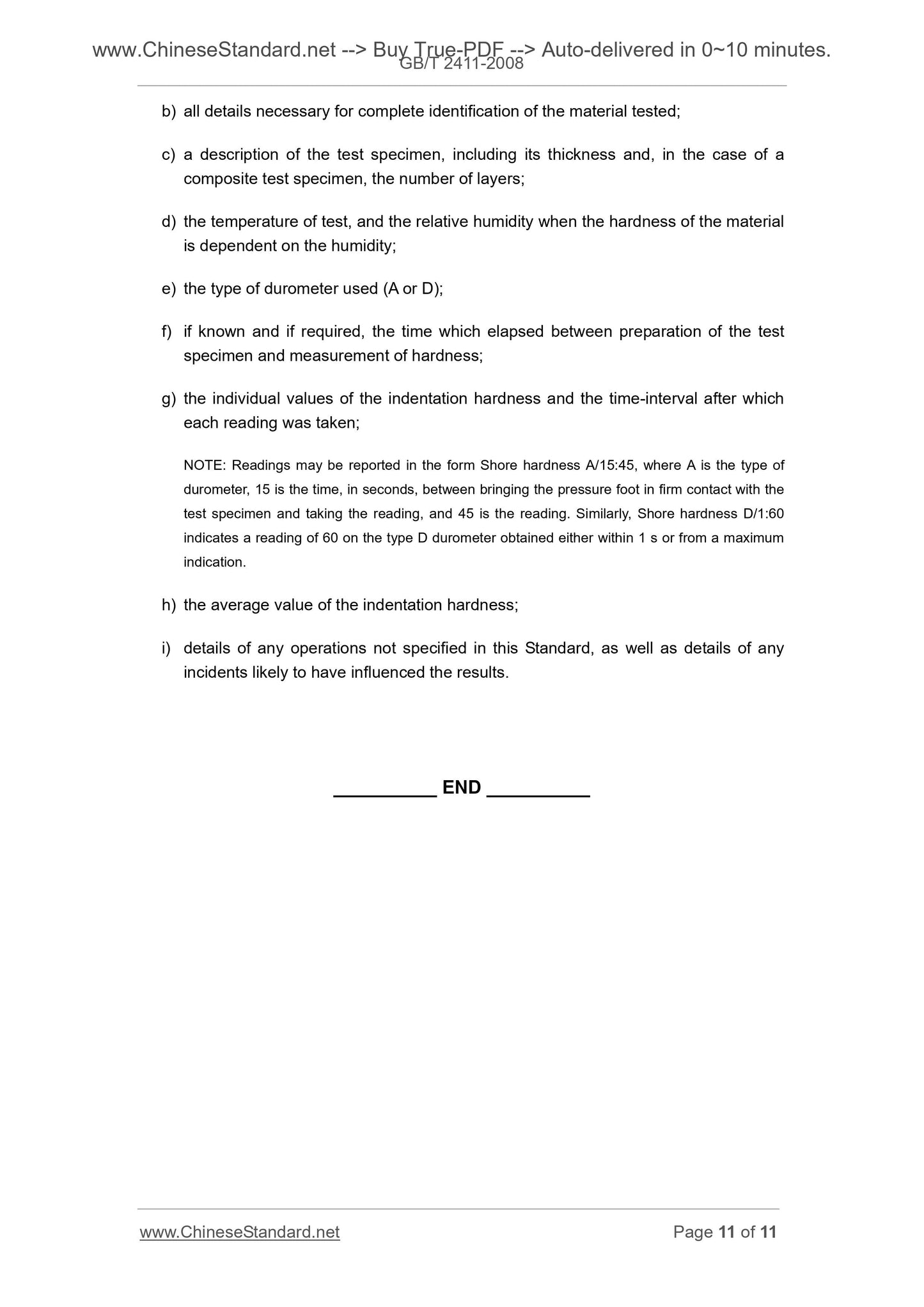1
/
of
6
www.ChineseStandard.us -- Field Test Asia Pte. Ltd.
GB/T 2411-2008 English PDF (GB/T2411-2008)
GB/T 2411-2008 English PDF (GB/T2411-2008)
Regular price
$70.00
Regular price
Sale price
$70.00
Unit price
/
per
Shipping calculated at checkout.
Couldn't load pickup availability
GB/T 2411-2008: Plastics and ebonite -- Determination of indentation hardness by means of a durometer (shore hardness)
Delivery: 9 seconds. Download (and Email) true-PDF + Invoice.Get Quotation: Click GB/T 2411-2008 (Self-service in 1-minute)
Newer / historical versions: GB/T 2411-2008
Preview True-PDF
Scope
1.1 This Standard specifies a method for the determination of the indentation hardnessof plastics and ebonite by means of durometers of two types. type A is used for softer
materials and type D for harder materials (see the Note to 8.2). The method permits
measurement either of the initial indentation or of the indentation after a specified period
of time, or both.
NOTE. The durometers and the methods specified in this Standard are referred to as type A Shore and
type D Shore durometers and durometer methods, respectively.
1.2 This method is an empirical method intended primarily for control purposes. No
simple relationship exists between indentation hardness determined by this method and
any fundamental property of the material tested. For specification purposes, it is
recommended that GB/T 6031-1998 Rubber, vulcanized or thermoplastic - Determination
of hardness (hardness between 10IRHD and 100 IRHD), be used for the softer materials.
Basic Data
| Standard ID | GB/T 2411-2008 (GB/T2411-2008) |
| Description (Translated English) | Plastics and ebonite -- Determination of indentation hardness by means of a durometer (shore hardness) |
| Sector / Industry | National Standard (Recommended) |
| Classification of Chinese Standard | G31 |
| Classification of International Standard | 83.080 |
| Word Count Estimation | 7,780 |
| Date of Issue | 2008-08-04 |
| Date of Implementation | 2009-04-01 |
| Older Standard (superseded by this standard) | GB/T 2411-1980 |
| Quoted Standard | GB/T 2918-1998 |
| Adopted Standard | ISO 868-2003, IDT |
| Regulation (derived from) | National Standard Approval Announcement 2008 No.14 (Total No.127) |
| Issuing agency(ies) | General Administration of Quality Supervision, Inspection and Quarantine of the People's Republic of China, Standardization Administration of the People's Republic of China |
| Summary | This standard specifies the method was measured indentation hardness of plastic and hard rubber with two types of hardness. A type of soft material which is used, D -type for hard materials (see Note 8. 2). Methods to measure the hardness or indentation starting after a predetermined time or both, the indentation hardness test. This standard test method as a quality control. No simple correspondence between the indentation hardness test material and the basic performance of its determination. Recommended materials for soft GB/T 6031-1998 " Rubber, vulcanized or thermoplastic-Determination of hardness (10 IRHD ~ 100 IRHD)". |
Share
